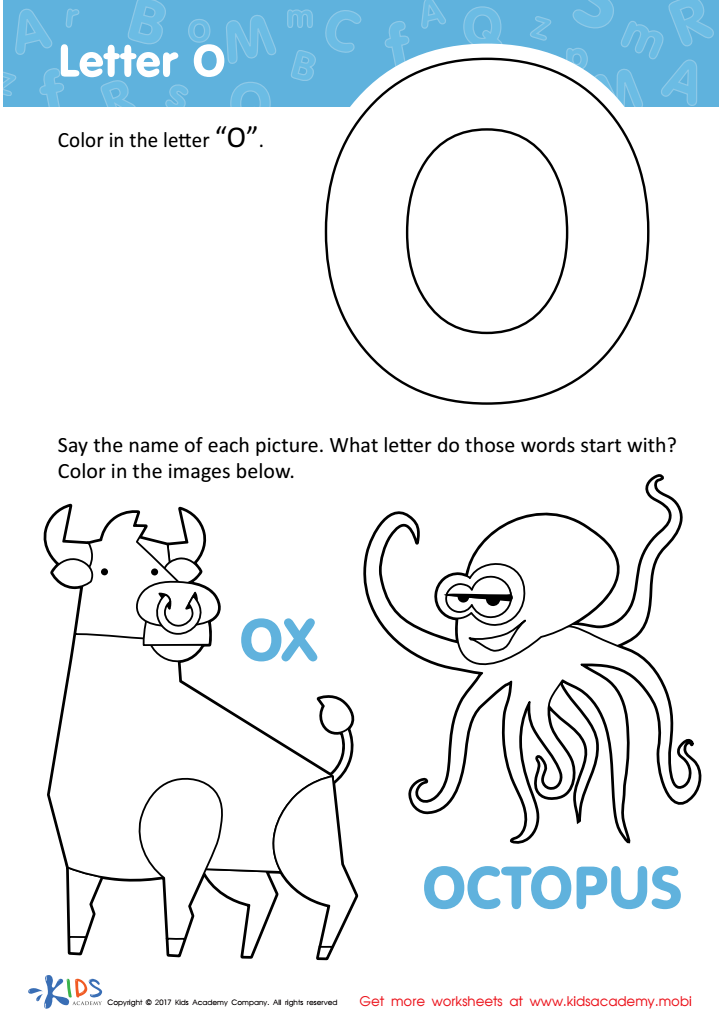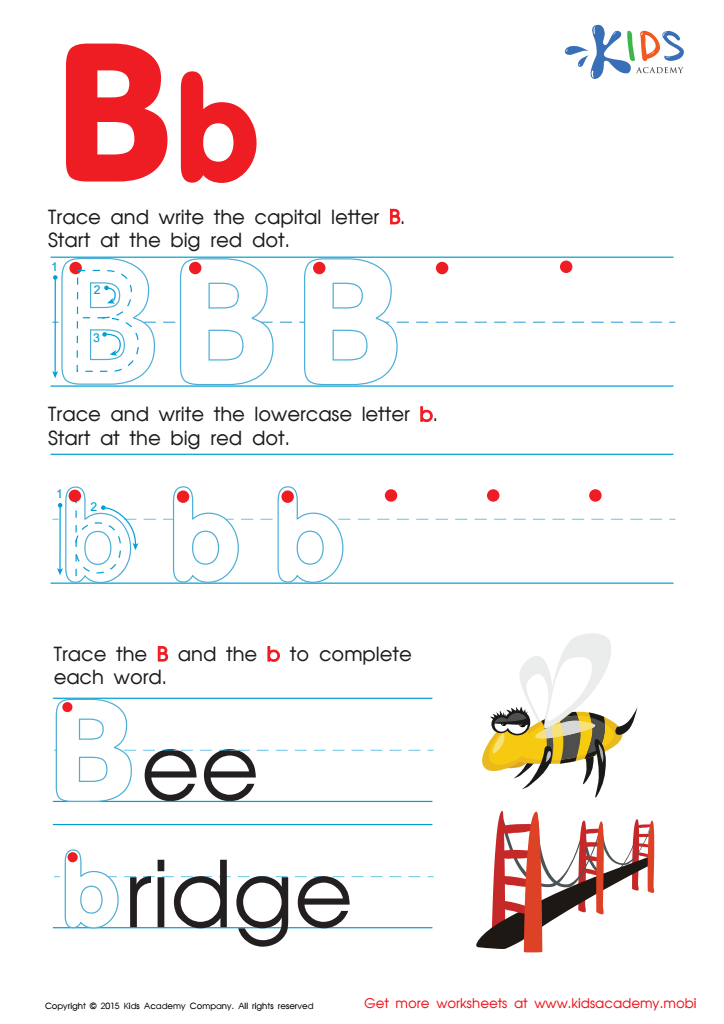Motor skills development Normal Letter Recognition Worksheets for Ages 3-7
3 filtered results
-
From - To
Introduce your child to the fundamental world of letters with our Normal Letter Recognition Worksheets for ages 3-7, designed to enhance motor skills development. These engaging activities offer a playful and effective approach to recognizing and writing the alphabet, promoting fine motor skills, hand-eye coordination, and early literacy. Delightful illustrations and letter tracing exercises make learning enjoyable and interactive. Perfect for preschool and kindergarten, these worksheets lay the groundwork for academic success by combining essential motor skill training with early alphabet familiarity. Nurture your child's growth and confidence with our comprehensive, expert-designed letter recognition resources.


Letter H Tracing Page


Letter O Coloring Sheet


Letter B Tracing Page
Motor skills development and normal letter recognition for ages 3-7 are critical building blocks for children’s overall growth and future academic success. Parents and teachers should prioritize these areas to ensure children’s well-rounded development.
Motor skills, categorized into fine and gross motor skills, are the physical actions that enable children to perform tasks. Fine motor skills involve small movements using hand and finger muscles – crucial for writing, cutting, and drawing. Gross motor skills require larger muscular activity, such as walking and jumping, aiding in physical coordination. Early development of these skills aids in children’s independence, control, and manipulation, necessary for everyday activities and classroom tasks.
Normal letter recognition, the ability to identify and differentiate letters of the alphabet, is foundational to literacy skills. Ages 3-7 are pivotal in laying these early literacy foundations. Recognizing letters aids in phonemic awareness, understanding sounds linked to letters, and facilitates initial reading and writing abilities. Children who can readily recognize letters are better equipped to develop strong literacy skills, crucial to their academic progression.
When parents and teachers foster these skills, they support children’s cognitive development, academic readiness, and confidence. It also ensures children remain engaged and successful in learning environments, paving the way for lifelong educational achievements. Therefore, attention to motor skills development and letter recognition during these formative years cannot be overstated.

 Assign to My Students
Assign to My Students
















